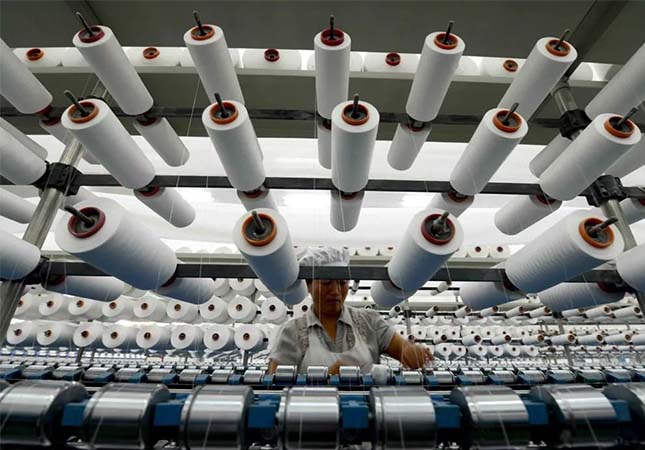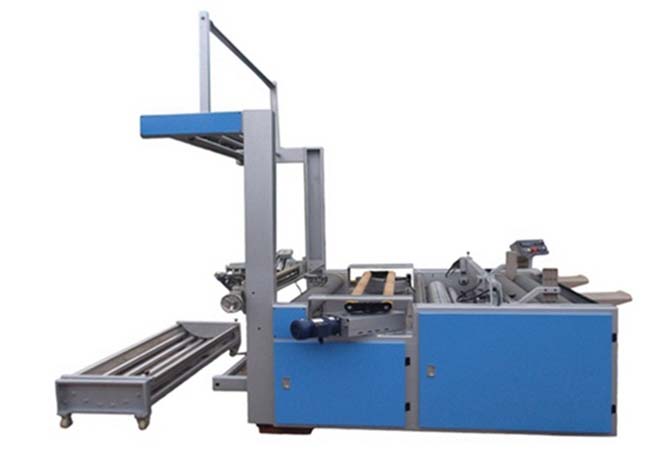The textile industry is one of the most important industries in the Industrial Revolution, especially in the first Industrial Revolution. As a critical machine in the textile industry, the fabric roll cutting machine which helps to cut the fabric into smaller pieces or samples also has inextricable links with the Industrial Revolution.

The First Industrial Revolution
The first Industrial Revolution was a period of rapid technological, economic, and social change that began in the late 18th century and continued through the 19th century. It was marked by a shift from manual labor to machine-based manufacturing, which was driven by technological innovations that enabled greater efficiency, productivity, and economic growth.
l The first Industrial Revolution began in Britain in the late 18th century, and it quickly spread to other parts of Europe and North America. The key technological innovations of the period included the steam engine, textile machinery, and the iron smelting process.
l The key innovation of the first Industrial Revolution was textile machinery, such as the spinning jenny and power loom. These machines enabled textiles to be produced on a large scale, which helped to meet the growing demand for textiles during the period. The development of textile machinery also enabled greater standardization in the textile industry, which was important for mass production.
l The first Industrial Revolution had a profound impact on society, transforming the way goods were produced and consumed, and laying the foundations for the modern industrial economy. The shift from manual labor to machine-based manufacturing led to significant changes in the labor market, as many traditional jobs were replaced by machines, which led to the emergence of new jobs, particularly in the manufacturing and engineering sectors, which required skilled workers to operate and maintain the machines.
l The first Industrial Revolution also had significant social and environmental implications. The growth of manufacturing and urbanization led to changes in the social structure, as people began to migrate from rural areas to urban centers in search of work, benefits to the emergence of new forms of social organization, such as the factory system and labor unions.
The Relationship Between the Fabric Rolling Cutting Machine and the Industrial Revolution
The fabric roll cutting machine and the Industrial Revolution were closely linked, as the machine played a significant role in the textile industry, which was one of the key industries of the Industrial Revolution. There are specific connections between the fabric rolling cutting machine and the Industrial Revolution.
The fabric roll cutting machine was one innovation that enabled greater efficiency, productivity, and economic growth in the textile industry, and had a profound impact on the textile industry and the wider economy.
1. Greater efficiency
Prior to the invention of the fabric roll cutting machine, the fabric had to be cut by hand, which was a slow and labor-intensive process, the situation made it difficult to produce textiles on a large scale, and it limited the range of products that could be produced. The fabric roll cutting machine, which was a key driver of the Industrial Revolution, revolutionized the way the fabric was cut, enabling large quantities of fabric to be cut quickly and accurately, significantly increasing efficiency and productivity in the textile industry.
2. Greater standardization
The fabric roll cutting machine also enabled greater standardization in the textile industry. With precision cutting, manufacturers could ensure that each piece of fabric was the exact same size and shape, which led to greater uniformity in textile products, which was important for mass production. By reducing variations in size and shape, manufacturers could produce more products at a faster rate, which helped to meet the growing demand for textiles during the Industrial Revolution.
3. Reduce labor costs
With the fabric roll cutting machine, a single operator could cut fabric much more quickly and efficiently, reducing the need for manual labor, which enabled manufacturers to produce more products at a lower cost, which helped to fuel economic growth during the Industrial Revolution.
4. Greater customization
The fabric roll cutting machine enabled greater customization in textile products, which led to the creation of a wider range of textile products, including products with unique sizes, shapes, and patterns, helped to meet the growing demand for textile products, which was driven by the rise of consumerism during the Industrial Revolution.
5. A profound impact on the workforce
The fabric roll cutting machine also had a profound impact on the workforce. With the shift from manual labor to machine-based manufacturing, many traditional jobs were replaced by machines, leading to significant changes in the labor market. This led to the emergence of new jobs, particularly in the manufacturing and engineering sectors, which required skilled workers to operate and maintain the machines. The fabric roll cutting machine was just one example of the many machines that emerged during the Industrial Revolution, which transformed the way goods were produced and consumed.
6. Broader implications for society
The machine enabled the production of textiles on a large scale, which helped to fuel economic growth and support the development of global trade. The increased production of textiles also helped to make clothing more affordable and accessible, which had important implications for social mobility. With more people able to afford cloth, social distinctions based on dress began to break down, and people from all walks of life began to dress more similarly.
7. Environmental implications
The fabric roll cutting machine enabled textiles to be produced more efficiently, which helped to reduce the amount of waste generated in the production process. However, the increased production of textiles also led to greater demand for natural resources, particularly cotton, which had significant environmental impacts. The increased demand for cotton led to the expansion of cotton plantations, particularly in the United States, which had significant environmental and social impacts, including deforestation, soil depletion, and slavery.

SUNTECH ST-USCM Ultrasonic Fabric Cutting Machine ( Fabric Roll Cutting Machine )
The SUNTECH ultrasonic fabric cutting machine is versatile in its capability to cut a wide range of fabrics. There is a list of features of the SUNTECH ultrasonic fabric cutting machine.
1. Customizable design: The machine can be tailored to meet specific cutting needs, with the option of heat or laser cutting.
2. Versatile fabric cutting capability: The machine can effectively cut various types of fabrics, including polyester, viscose, and more.
3. Aluminum scroll roller: This feature helps to spread the fabric evenly for better precision cutting.
4. End-of-roll stop sensor: This enables the continuous joining of fabric rolls and prevents waste.
5. Full-width fabric inspection: The machine is synchronized with other production operations for maximum efficiency.
6. Accurate length counting: This machine guarantees an exceptional counting accuracy of ≤ 0.1m/km.
7. Consistent roll output: The machine allows for customized output, with adjustable roll hardness.
8. Perfect edge alignment and accurate selvage cutting: The machine ensures a precise cutting error of +/- 5mm.
9. Various fabric input and output presentations: The machine offers a range of input and output formats, including plait to roll and roll to roll.
10. Waste collection after cutting: The machine streamlines the cutting process by collecting waste for improved productivity.
Conclusion
In conclusion, the first Industrial Revolution was driven by technological innovations that enabled greater efficiency, productivity, and economic growth. The first Industrial Revolution had a profound impact on society, laying the foundations for the modern industrial economy and shaping the world we live in today, and the fabric roll cutting machine was a significant technological innovation that played a crucial role in the Industrial Revolution.




